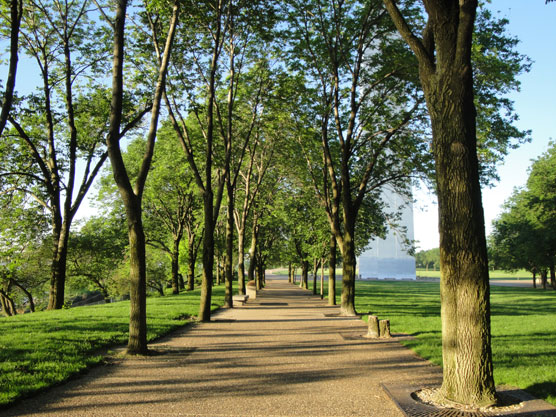|
You are viewing ARCHIVED content published online before January 20, 2025.
Please note that this content is NOT UPDATED, and links may not work. For current information,
visit https://www.nps.gov/aboutus/news/index.htm.

Sue Ford/NPS
Contact: Ann Honious, 314-655-1600 (St. Louis) – During Ash Borer Awareness Week, visitors to Jefferson National Expansion Memorial will learn about a tiny, foreign invader that threatens ash trees on the grounds of the Gateway Arch and elsewhere throughout the region. The emerald ash borer (EAB) originated in China and is starting to spread through North America. The beetles feed only on ash trees. Once a tree is infested, it will die within four to seven years. The historic landscape on the Arch grounds, designed in the 1960s, includes a monoculture of approximately 1,200 White “Rosehill” Ash trees. The deadly EAB spreads when people move infested ash trees, logs, or firewood into uninfested areas. None of the beetles have yet been found in the St. Louis region, but the U.S. Department of Agriculture and state agriculture departments have quarantined Wayne County, Missouri and the entire state of Illinois. Summer campers can help prevent the spread of EAB by obtaining firewood near their campsites and not transporting it to other places. Experts believe that the insects arrived first near Detroit, Michigan, hidden in wooden packing material used to ship consumer goods to the United States. EAB went undetected for at least 12 years and was officially identified in 2002. Since then it has destroyed hundreds of millions of ash trees in over 12 states and two Canadian provinces. In North America, native ash trees have little or no resistance to EAB. The beetles have few natural enemies, among them the Downy and Hairy woodpeckers. The National Park Service at Jefferson National Expansion Memorial is currently conducting an environmental assessment to outline the best course of action should the ash borer spread to St. Louis. |
Last updated: July 19, 2019
